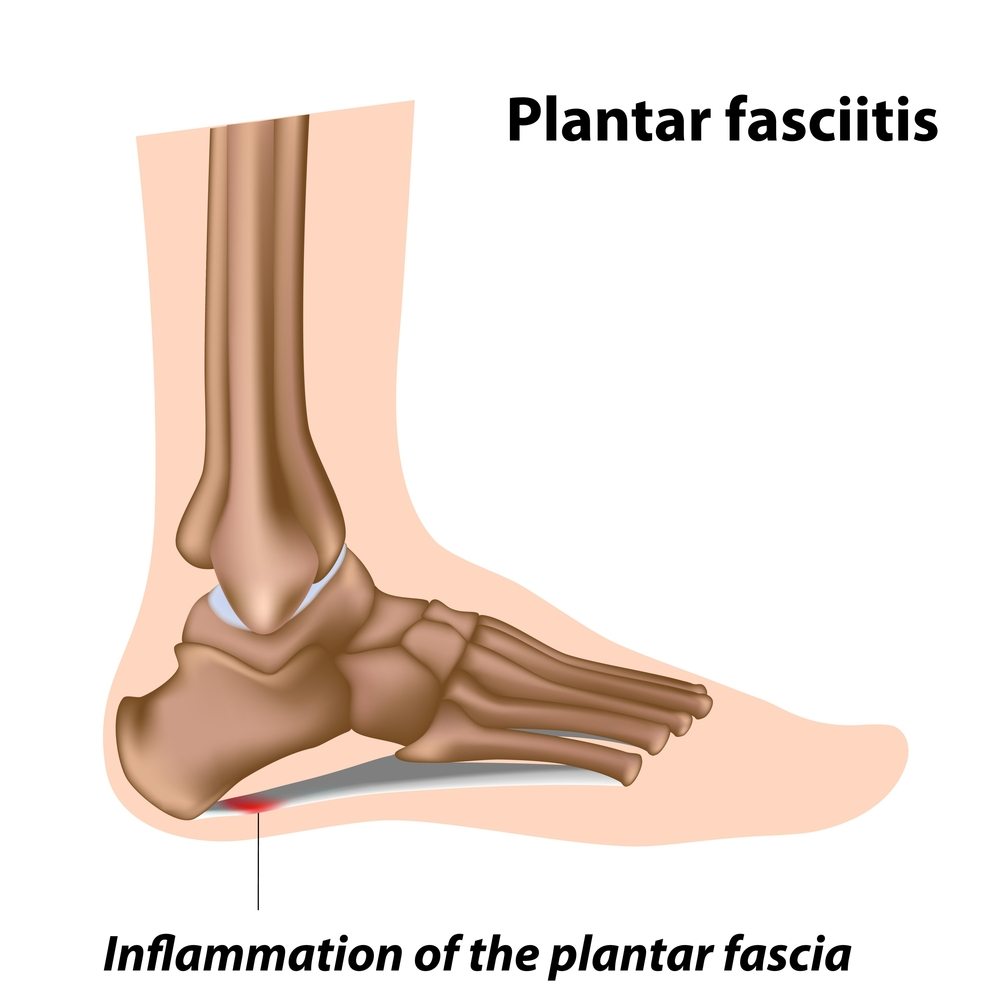Plantar fasciitis occurs when the ligament on the bottom of your foot, extending from the heel to the toes, becomes inflamed and causes heel pain. Plantar fasciitis is the most common cause of heel pain. It can be caused by anything that places excess strain on the plantar fascia, however it is most commonly a result of high arches or flat feet. In addition, it can also be caused by overuse (high impact exercise or excessive walking), standing for extended periods of time, or wearing footwear with a lack of support, especially on hard, flat surfaces.
Did You Know?
The American Podiatric Medical Association found that 77% percent of Americans report foot pain annually, with 2 million of those suffering from Plantar Fasciitis.
Frequently Asked Questions
Do I have Plantar Fasciitis?
If you are experiencing heel pain that increases after inactivity and decreases with rest, heel pain that occurs after long periods of standing, heel pain that is worst first thing in the morning and then improves with some activity, or heel pain that continues to progress, then you may be affected by plantar fasciitis. If you think you may have plantar fasciitis, schedule a consultation with Dr. Hadfield today!
How will Dr. Hadfield diagnose Plantar Fasciitis?
In order to accurately diagnose plantar fasciitis, Dr. Hadfield will evaluate your medical history and perform a physical exam on your foot to rule out other possible conditions. Some type of diagnostic imaging, most commonly x-rays, will also be used to aid in the diagnosis.
What treatments are available for Plantar Fasciitis?
There are a variety of treatment options available for plantar fasciitis, and Dr. Hadfield will discuss these options in depth to help you find the best fit. Treatment options for plantar fasciitis generally aim at supporting and strengthening the plantar fascia, and managing pain. Some support-based treatments include: padding, strapping your feet to decrease fascia strain, using orthotics to correct structural issues, wearing a removable walking boot to allow your foot to heal, undergoing physical therapy to properly stretch the plantar fascia, and wearing a night splint designed to keep your plantar fascia stretched during periods of rest. Injections of steroids can also be used to help alleviate excess pain and inflammation, but are not the first line of treatment.
Will I need surgery for my plantar fasciitis?
If the aforementioned treatment options have failed,a surgical approach may be needed. Surgical approaches vary depending on your individual case, so Dr. Hadfield will discuss your options and help you decide on the best approach.
Few people need to undergo surgery to treat plantar fasciitis. However, it is an option for patients with severe heel pain that has not responded to more conservative treatment measures. Dr. Hadfield will exhaust all conservative treatments before recommending surgery for this condition.
What should I expect after treatment?
While treatment will provide relief of your symptoms, since the main cause of plantar fasciitis is your foot structure, you will need to maintain a long-term approach to treatment to get the best results. To manage your plantar fasciitis, you will want to stretch your calf muscles daily, always wear properly-fitting shoes with arch support and avoid going barefoot, and limit your activity level when you notice discomfort. To manage pain caused by plantar fasciitis, you will want to take non-steroidal anti-inflammatory drugs, such as Ibuprofen, and use an ice pack several times a day for 20 minute intervals during times of inflammation.
Dr. Hadfield of Hadfield Foot & Ankle has been serving McKinney and the surrounding Collin County area by providing excellent care to patients through highly skilled conservative and surgical treatments, as well as superior customer service. If you have foot or ankle concerns, schedule a consultation with Dr. Hadfield today and take your next step forward!

